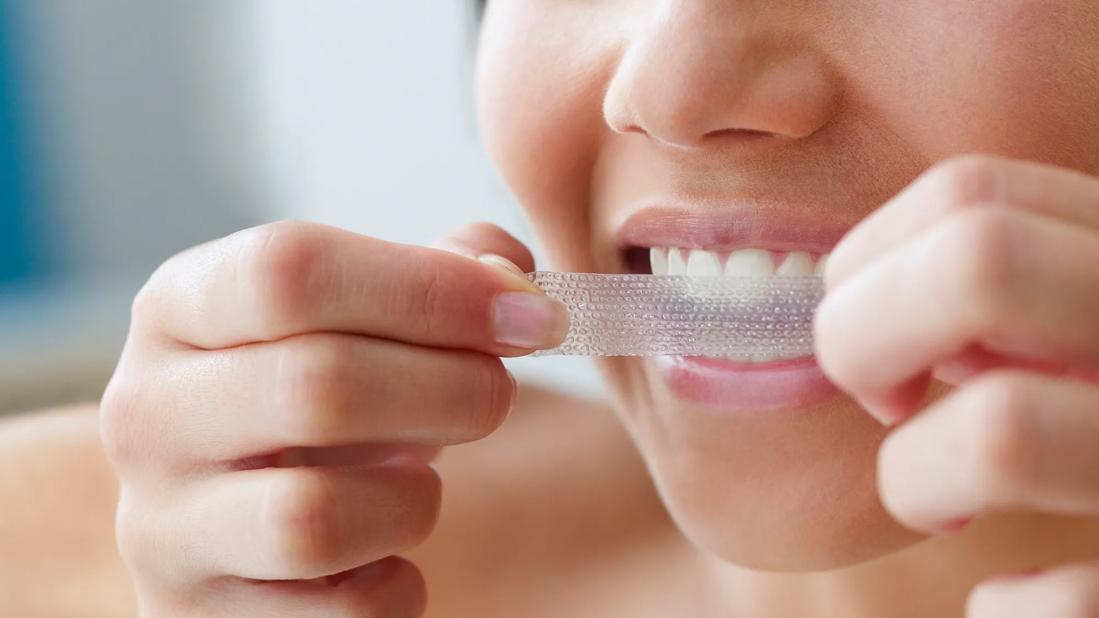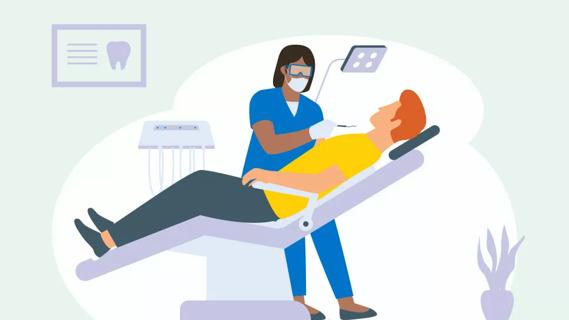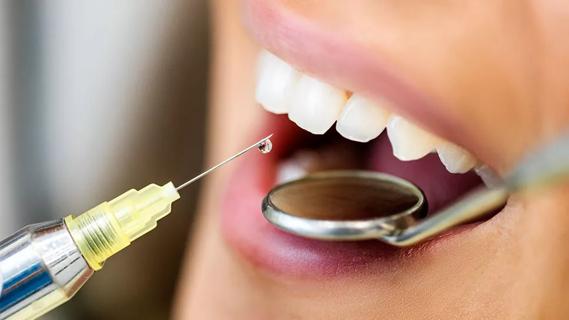Strips, gels and professional treatments can help you achieve a brighter smile

Nobody wants to be famous for their pearly yellows.
Cleveland Clinic is a non-profit academic medical center. Advertising on our site helps support our mission. We do not endorse non-Cleveland Clinic products or services. Policy
As we age, our smile begins to fade and looks a little dingy. Certain foods and drinks, as well as smoking, can cause discoloration affecting our once-gleaming grin.
Enter at-home teeth whitening products like strips and gels. These options have gained popularity, but are they really a safe way to brighten your smile? Or should you opt for in-office professional whitening treatments?
Dentist Anne Clemons, DMD, explains how teeth whitening works and if it’s worth it.
There are different ways you can whiten your teeth.
At-home options include products like sticky strips or gel-filled trays. They’re easily available over the counter, and they can do a great job lightening teeth and removing stains.
Just place strips or a tray on your teeth and leave on for the recommended amount of time (these can vary per product, so make sure you follow the instructions).
The formula used in most at-home products contains hydrogen peroxide or carbamide peroxide, a chemical that contains hydrogen peroxide. A natural bleaching agent, hydrogen peroxide breaks down molecules that cause discoloration caused by coffee, tea, red wine and smoking.
Carbamide peroxide does the same, but it releases about 50% of its whitening ability in the first few hours and can remain active for hours after. Overall, the effects of hydrogen peroxide and carbamide are the same.
You may need to use at-home products daily for a week to achieve results.
You can also turn to professional teeth whitening. Your dentist will use a stronger concentration of hydrogen peroxide or carbamide peroxide.
In-office treatments may give you longer-lasting results over a shorter amount of time. You may only need one treatment or just a few visits to achieve the bright smile you want. But the cost for such treatments may be more than at-home options.
If your goal is to get a bright white smile, teeth whitening can be a safe option. But it’s important to talk to a dentist first about your options and do your research.
Research shows that hydrogen peroxide products might damage proteins in your teeth’s dentin layer. Dentin is the hard tissue that lies beneath your teeth’s surface enamel.
Another study shows that whitening products might also roughen or soften your teeth’s surface.
But there’s a caveat. “These studies were done in a lab, not on living teeth,” notes Dr. Clemons.
It’s possible that the changes are temporary and could reverse after a person stops using teeth bleaching products. Even if the changes stick around, though, it’s not clear if they equal bad news for your choppers.
“We don’t know yet whether this is something that will have a long-term effect on tooth health,” Dr. Clemons says.
It’s also important to take into consideration what type of product you’re using and how it fits within your mouth. You want to keep hydrogen peroxide or carbamide peroxide on your teeth and off your gums to avoid sensitivity and irritation.
Now for some reassurance. Bleaching products have been around for decades, and millions of people use them — including plenty of dentists, Dr. Clemons points out.
“And we haven’t seen an increase in problems like cavity risk or tooth fractures after bleaching,” she says.
The American Dental Association (ADA) has also said that hydrogen peroxide whiteners are safe and effective.
If you do use them, Dr. Clemmons advises how to do so safely:
You can take steps to keep your teeth sparkling so you won’t have to use teeth bleaching products so often, too.
Dr. Clemons offers the following tips:
Teeth whitening products — whether an over-the-counter option you use at home or a professional treatment — can be effective and safe, if used correctly.
“If you want a brighter smile, teeth whitening products can be good tools,” says Dr. Clemons. “But they aren’t a substitute for good dental hygiene.”
Learn more about our editorial process.

If you have naturally red hair, feeling the pain may be in your DNA

Help and encourage them to brush and floss regularly, limit sugary foods and get routine dental checkups

Estrogen and progesterone changes throughout the month — and throughout your life — can make you more prone to dental health concerns

Benefits typically include bi-annual screenings and lower payments on procedures like fillings and crowns

Dental care is not only safe during pregnancy, but it’s also highly recommended

The numbness and tingling should wear off in about two hours

Once you see that first tooth, it’s time to start brushing

You can do damage to fillings, crowns and even your teeth themselves

Your metabolism may torch 1,300 to 2,000 calories daily with no activity

A gentle touch in all the right places may help drain your sinuses